Print News from Round the World
This edition of the weekly update includes why a new player is bullish on audio books; ad spending to grow at 8.4% in 2018 in India; a collection of essays to mark 25 years of Babri Masjid demolition; a start up is publishing India’s first Braille lifestyle magazine; 100 years of one rupee note; delving into the visual stories brimming at the fringes; Airtel acquires a strategic stake in Juggernaut Books
06 Dec 2017 | By Dibyajyoti Sarma
Why a new player is bullish on audio books
As the Kindle completes ten years of operation and digital publishing initiatives like Juggernaut Books and Pratham’s StoryWeaver gather steam, the digital space in publishing is finally beginning to look promising. On November 27, Storytel India entered the market with audio books of existing titles as well as exclusive content created especially for its users. Kanishka Gupta speaks to Yogesh Dashrath, country manager, India at Storytel:
Storytel has launched in eight countries so far…
Storytel is currently operational in Sweden, Denmark, Finland, Norway, Netherlands, Poland, Russia and Spain, in addition to India. It is the most popular streaming service in a majority of these countries. We have over half a million paying subscribers. People love our service, with 97% reporting to be satisfied. In Sweden this year, the total proportion of audiobooks listened to is getting close to 65% of total physical books sold. So overall, the response to Storytel has been immensely positive.
There have been attempts in the past to launch audio books in India but they haven’t borne fruit…
In the last two years, smartphones have become ubiquitous and the high-speed mobile internet has become affordable to a significant number of Indians. We see all these developments as positive. Storytel allows people to listen to books while they commute, while they exercise in the morning or as they do household work. Also, we have a good catalogue of regional language content – there is a significant young population today that consumes regional content on TV and still finds it difficult to read books in a regional language. The advantage of audiobooks is that, at end of the day, they are stories told well by powerful voices. India has a rich oral tradition and Indians love listening to stories. We grow up listening to our parents or grandparents tell us stories. I am 100% sure that the medium will work in India. That said we are aware that it will take time to grow in India. We are patient and our plans take into account the learning curve.
What’s the rationale behind starting in three languages – English, Hindi and Marathi?
English is the top trade book language in India. Hindi is the most widely understood one. Those two were easy to choose. Marathi because it was the second most read language for leisure as per the 2009 National Youth Readership survey. In addition, if we consider Mumbai and Delhi as the top two cities in India, by launching in these three languages, we cover most of the population. Also, we plan to continue to add other regional languages as we grow in India.
The application is launching with 60 English titles. Are these foreign titles and out of print classics or books by Indian writers writing in English?
These are Indian titles. We have titles from Karadi Tales, a name synonymous with audiobooks in India, as well as titles from Harper Collins. We will soon have titles from Penguin Random House as well. There are more partners whose books are being converted to audio as we speak. Additionally we will launch thousands of English titles from most global publishers in the first quarter of 2018. (Courtesy Scroll.in)
Ad spending to grow at 8.4% in 2018 in India
Advertisement spending in India is expected to grow 8.4% in 2018, led by growth in television ads, Publicis Groupe-run media agency Zenith forecasted. Advertising expenditure in India is expected to reach Rs 58,422 crore next year, the agency said. The estimated growth rate for 2018 is about three percentage points lower than the 11.2% forecast for 2017, when ad spending was estimated to touch Rs 54,344 crore.
The media agency on Monday released its Advertising Expenditure Forecast report, stating that 2017 will close at Rs 53,918 crore, registering a slightly slower pace of growth on account of demonetization introduced in November 2016. Internet ads will account for 11.6% of the spending this year.
India is one of the few large markets where all traditional media platforms will grow, the report said. Television advertising is expected to grow 9%, radio 10%, and print, cinema and outdoor at 5% each. Calling India a leading digital market, the report said internet advertising will grow at 20.4% in 2018 and internet will account for 15.4% of total ad spends in the country by 2020. (Courtesy Livemint)
A collection of essays to mark 25 years of Babri Masjid demolition
An activist helps a woman, a victim of the riots in Mumbai that followed the demolition of Babri Masjid. As she accompanies the young woman to the spot where she was brutally raped, she listens to her talk about the cruelty of the perpetrators and the apathy of the onlookers. A few weeks later, the activist finds herself in the same neighbourhood; this time, to meet the family of the prospective groom for her niece. Memories of the young woman rush into her head, and with them questions about the people she is meeting. Did they turn a blind eye to that woman’s plight as she screamed for help on that unfortunate day? Were they complicit in the act through their silence?
When Shaila Satpute looks back at the Babri Masjid demolition and its bloody aftermath, the memory comes back to haunt her. Formerly the general secretary of Maharashtra for Janata Dal, Satpute recounts this story as part of a personal essay in the book, ‘Babri Masjid, 25 Years On’. A collection of such personal essays by a mix of journalists, activists and artists, the book marks 25 years of the Babri Masjid demolition and will be released this week. The compilation also doubles up as a special edition of the Indian Journal of Secularism, managed by acclaimed activist Irfan Engineer, also the series editor of the book.
“The demolition of Babri Masjid was unarguably a watershed event in independent India. In the 25 years since, the country continues to experience the grim consequences, especially the deepening communal divide. However, it didn’t only impact — and devastate — the lives of those directly affected by the incident or the bloody aftermath across India; thousands of people look back at the day as one that altered the course of their lives. The book chronicles some such stories,” says Engineer. The 15 essays have been contributed by activists Flavia Agnes, Rekha Thakur and Helen Bharde, thespians Dolly Thakore, Sushma Deshpande and Shafaat Khan, among several others. (Courtesy The Indian Express)
A startup is publishing India’s first Braille lifestyle magazine
Founded in May 2013 by a 20-something former PR executive, White Print is a 64-page monthly that aims to bolster the Braille literacy movement. India has about 12 million visually impaired people but lacks an equivalent focus on Braille literacy.
With White Print, Upasana Makati wanted to change that.
It’s like any other lifestyle magazine but more diverse, says Upasana, who was included on the Forbes India 30 Under 30 list in 2016. “We don’t stick to the theme of a typical lifestyle magazine, and also include stories on world politics, global affairs, sports, technology, culture, fashion, technology, inspiring human stories, short stories and even reader contributions,” she says.
Readers say that while they may be visually impaired, they want to read about more than just topics relating to their specific situation “The community does just about everything and they are no different, so we want to cater to them in that particular way,” says Upasana.
For this purpose, White Print has a content-sharing partnership with Caravan, a long form magazine focusing on politics and culture, and also relies on paid freelance writers across India. “We are open to more editorial tie-ups to diversify the voice and foster inclusion. I am very conscious that our readers are exposed to well-informed global writers and their opinions too,” she says.
Readers can also contribute to the magazine, and contributions from people living or working with the visually impaired are encouraged. A Canadian scholar based in Hyderabad, Nikki Cochrane, has a popular column about raising her visually impaired child.
White Print is a for-profit company. To that end, it has brought about a revolution not only in Braille writing, but also in Braille advertising. While advertisers initially shied away from the idea of matte print ads without the traditional accompanying images, White Print offered them access to the world’s largest visually impaired population—many of whom also happen to be aware and empowered consumers. (Courtesy The Splice)
100 years of one rupee note
The nation marked the 100th birthday of the Rs 1 note on 30 November. Introduced on 20 November 1917, the note was brought in as minting silver coins became too costly during the First World War. This note, along with other small-value notes such as the exotic Rs 2 and eight annas were discontinued on January 1, 1926, on cost-benefit considerations. The first Rs 1 note was printed in England with a photo of King George V on it.
The rupee started getting printed in India only after the Security Press and Currency Note Press was established in Nasik, Maharashtra, in 1928. After the establishment of the Reserve Bank of India (RBI) in 1935, the rupee, including the Rs 1 note, started becoming the fiat currency of the nation.
In 1940, the Rs 1 note was re-introduced with the status of a rupee coin. The note had the image of a rupee coin with a photo of King George VI. After Independence, the currency presses were busy printing notes for both India and the newly-created Pakistan. Once that arrangement was over, Independent India’s first Rs 1 note was printed in 1949 with the Lion Capitol of the Ashoka Pillar. The note was signed by India’s first Finance Secretary R K Shanmukham Chetty.
While all other notes have the RBI governor’s signature, the Rs 1 note is signed by the finance secretary as a testimony that it is the base unit of the currency system and an “asset” of the government. Hence, the note does not say “I promise to pay the bearer”, unlike other notes. Basically, when the RBI governor says I promise to pay Rs 10, he essentially means he will pay 10 one-rupee coins or notes, which are assets of the sovereign. The Rs 1 note has seen several revisions, and after being discontinued in 1994, was reintroduced in 2015, quickly scaling up to 160 million pieces in two years. (Courtesy Business Standard)
Delving into the visual stories brimming at the fringes
There are comics in the world that are worldwide phenomena, forged deeply in the pop culture consciousness of the global audience, and enjoy a cult following that embraces high-testosterone movies made on mammoth budgets. Then, there are the other kind. They are alternative and independent, feisty and non-conforming. With DeCaf, a comic arts festival, Anindya Roy, the helmer of an independent graphic novel publishing house called Manic Mongol, aims to create a haven for those kinds of comics.
“I feel the underground comic scene in India is very disorganised. We wanted to bring the new generation of graphic storytellers together and showcase their work,” says Roy. He rues the predicament of comics, saying that festivals centred around the form have been reduced to “fancy dress parties”. “Of course, the superhero clout and other comics for children are entertaining but the form has expanded its identity,” adds Roy.
The three-day festival clubs artists riding the fringes with those whose works have garnered wider acceptance. Several international artists will be presenting their works alongside our own. Exhibited works, which dot the India International Centre, range from erotica to travelogues, feminism to horror.
“It was important for us to cover the diversity of themes that artists explore so as to further open up the conversation about comics,” says Roy. It isn’t only in theme or aesthetic but also in form that variety emerges. Swiss artist Lika Nüssli, whose work ranges from the political to the personal, extends comics to performance drawing and large-scale installations that viewers can physically enter. “Illustration allows me to venture into territories that I may not explore otherwise.
My intention is to show a free way to do comics and be inspired by something that I didn’t know before. So, I am constantly looking for that which cannot be planned,” she says. These are, as Westland publisher Karthika VK puts it, works where “art is not merely illustrating the text but the art, itself, needs to be read”.
This is perhaps why Priyesh Trivedi, who is better known as the visual artist behind the popular Facebook page, Adarsh Balak, feels that graphic storytelling is not understood as a “serious mode of communication.” “When I read the comments on the Adarsh Balak series, I realised that some people had completely missed the point. I try, as a result, to be as direct and unambiguous as possible. With my work, I want empower people to create their own value systems and break away from the conventions laid out for us,” he adds. (Courtesy The Indian Express)
Airtel acquires a strategic stake in Juggernaut Books
Bharti Airtel (‘Airtel’), India’s largest telecommunications service provider, has acquired a strategic stake in Juggernaut Books, a popular digital platform to discover and read high quality, affordable books and to submit amateur writing.
The investment is in line with Airtel’s endeavour to build an open content ecosystem and bring world-class digital content to its customers. The investment from Airtel will enable Juggernaut to ramp up content acquisition and digital marketing and prepare for a subscription offering launch in the next few months.
Badal Bagri, Chief Financial Officer, Bharti Airtel, said, ‘Juggernaut is an exciting digital platform and complements our content vision. We look forward to working with them and supporting the next phase of their growth journey.’
Chiki Sarkar, founder and publisher, Juggernaut Books, said, ‘We are excited to partner with Airtel in our journey ahead. Airtel has a great understanding of digital content consumption and we have much to learn and benefit from this strategic partnership.’
‘Our ambition is to get many more Indians to read and write, and our partnership with Airtel will allow us to expand our distribution manifold,’ said Simran Khara, CEO, Juggernaut Books.
Juggernaut’s existing investors include Infosys co-founder and current chairman, Nandan Nilekani and Boston Consulting Group India CEO Neeraj Aggarwal. Launched in April 2016, the platform has close to 1 million downloads across Android and iOS. In May 2017, the writer’s platform went live to offer amateur writers an opportunity to digitally publish their content and stand a chance to win publishing contracts. The writer’s platform in the past six months has received just under 500 stories with nine of them securing publishing contracts. (Courtesy Juggernaut Books)


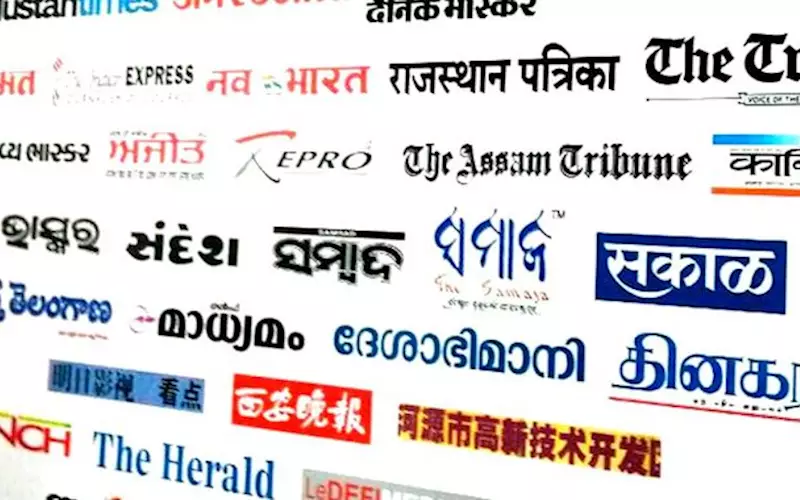
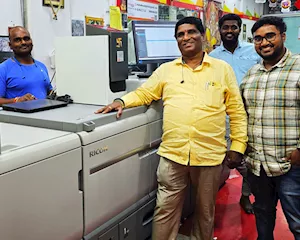
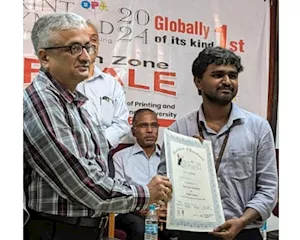

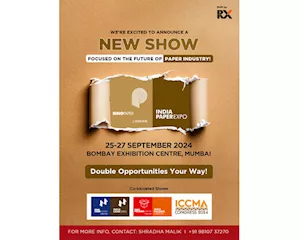
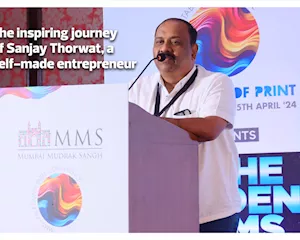

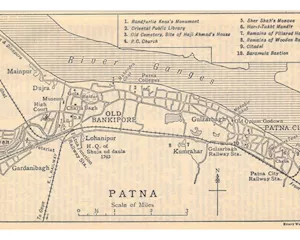
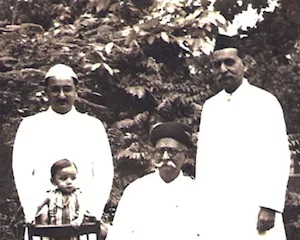
 See All
See All